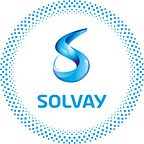From Salt to Solar: How to stay healthy for 200 years
Solvay’s Bad Wimpfen site has just blown out 200 candles on ein gross birthday Kuchen and it’s still (very much) alive and kicking. The 300 employees of the German plant have even recently contributed to one of the world’s most cutting-edge adventures, as their products were on board Solar Impulse, the plane that flew around the globe without a single drop of fuel.
What’s the secret to such longevity? Re-invent and innovate! Bad Wimpfen has repeatedly morphed into something better and newer, ever since its creation in 1817.
In the beginning, there was salt
The site plant first produced cooking salt, taking salt water, also known as brine, and evaporating it over extreme heat. “Obviously this business model would not have been sustainable for generations,” explains plant manager Uwe Männel. Mined minerals are much more cost-effective and available in larger quantities. Luckily, “our forefathers realized in a timely manner that the future would require new products,” says Uwe.
As salt is an essential ingredient in many chemicals, Bad Wimpfen naturally shifted to more sophisticated activities: the saline was then used to produce inorganic fluorides such as cryolite, which is used to recover aluminum. Organic fluorenes, such as non-combustible propellants for aerosol cans, followed until Nobel laureate Paul Crutzen discovered their negative impact on the atmosphere, leading to the discontinuation of these products.
Sustainable chemistry
“Today, we invest in developing products that meet the long-term challenges of society,” says Uwe. “People are living longer, and this population of older citizens is growing rapidly. The need for effective medicinal and plant protection products is therefore increasing. Fluorine compounds from Bad Wimpfen are indispensable for the synthesis of active ingredients used in such products.”
Mobility is another basic requirement. The inorganic fluorine compound NOCOLOK®, produced at the site, is widely used for the production of lightweight, aluminum-based automotive air-conditioning and heating systems.
And of course Bad Wimpfen products were also on board Solar Impulse, including an additive that makes the batteries more efficient and a component for cockpit insulation, to prevent the pilot from freezing to death. Also, fluorinated chemicals are a key ingredient in the manufacturing of solar cells and microchips. “In the future, we will continue to make a significant contribution to addressing the challenges of tomorrow through chemistry, and therefore look optimistically to the next 200 years,” concludes Uwe.
Learned something? Click the 💚 to help others find this article.
This article was first published on our website: Solvay.com.
